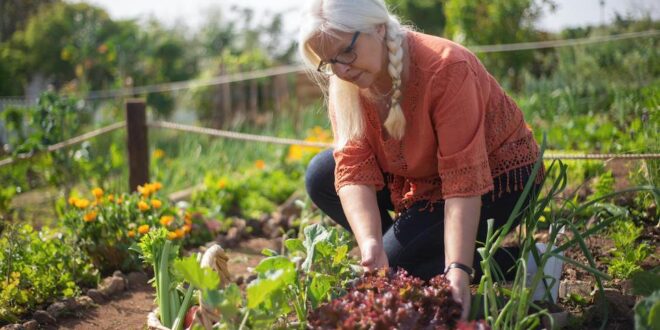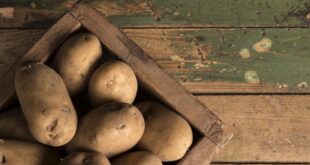Creating space for new-season sowing and growing – it’s a gardener’s biggest headache in spring, but even more so when you’ve sensibly downsized your edible beds. Although spring signals the time for a new round of sowing and transplanting, many of our winter vegetables are still producing. If we want to cut costs, we need them to be, because until new-season vegetables come on-stream, fresh produce is often one of the most expensive items in the supermarket trolley. So, just how do we make the most of the vegetables our garden is still giving us, while creating space for the next round? Here are some tricks of the trade to get you started:
Take stock!
Inspect the herbs and vegetables you already have, and ask yourself how much value they actually have left in them. If the likes of celery, leeks, green onions, garlic chives, parsley, etc., are looking a little ragged around the edges, or if they’ve run to seed or look as if they are about to, harvest them. Chop them finely and dehydrate them, then blitz them into powdered stock. Alternatively, boil them down to a concentrated liquid stock, and freeze. Note: Brassicas, with their strong flavour, don’t lend themselves to stocks.
Freeze
Most gardeners think of their freezer as a way to preserve autumn produce, but a freezer is even more valuable in spring. Harvest winter root vegetables (such as carrots, parsnip, celeriac, and beetroot) and brassicas (such as broccoli and cauli) before they even look as if they are going to seed. Process according to requirements (blanching etc) for each individual vegetable, and free flow for this shoulder season, until summer veg comes on-stream.
Clamp
Dig up root vegetables before they show signs of running to seed, and trim off their leaves to within 1-2cm of the top of the root. Dig a hole (about the depth of a spade blade) away from your garden bed (you can even do this in your lawn by carefully removing turf so it can be replaced when you are finished using the hole). Pop your trimmed root vegetables into the hole (known as a clamp), and cover with loose soil or untreated saw dust. Storing your root vegetables in this way will keep them fresh and easy to access as you need them in the kitchen.
Move ’em
Many gardeners like to save their own seed, but a seeding vegetable takes up an ever-growing space in a garden that could otherwise be used for new-season sowing. Fortunately, most seeding vegetables are happy to relocate once they start running to seed. Once you see signs of ‘bolting,’ dig the plant from the garden (taking a good shovel of soil with it), and pop it into an unwanted corner of your section where it can flower and set seed.
Bag it!
Some vegetables and herbs (such as carrot, spinach, and parsley) don’t like to be transplanted, while others thrive on the shock. Do your research carefully, and sow those that don’t mind moving home (such as lettuce, beans, beetroot, and silverbeet) into recycled containers that can be temporarily stored on a patch of lawn or hard surface. As space becomes available in the garden bed, transplant them into their permanent spot.
Crowd pleasers
Providing individual vegetables with adequate space is important – but many, especially leafy greens, are initially happy to be part of a crowd. Sow the likes of lettuce, spring onions, spinach, and Asian greens in a patch. Harvest 60-70% of the plants as baby greens, leaving the rest to grow on into maturity in the remaining space (be sure to remove the root of the vegetables you are harvesting as well as the leaves – the disturbance to the soil is actually beneficial to the remaining plants as it allows air into the soil). You can also use this thinning method with fast-growing root crops such as ‘Paris Market’ carrots, and radishes.
The produce your garden offers in early to late spring is some of the most valuable you will harvest all year. Make the most of it while creating space for the next round of edibles!









Join the Discussion
Type out your comment here:
You must be logged in to post a comment.